Complexity and Entropy Analysis to Improve Gender Identification from Emotional-Based EEGs
- PMID: 34603651
- PMCID: PMC8481061
- DOI: 10.1155/2021/8537000
Complexity and Entropy Analysis to Improve Gender Identification from Emotional-Based EEGs
Abstract
Investigating gender differences based on emotional changes becomes essential to understand various human behaviors in our daily life. Ten students from the University of Vienna have been recruited by recording the electroencephalogram (EEG) dataset while watching four short emotional video clips (anger, happiness, sadness, and neutral) of audiovisual stimuli. In this study, conventional filter and wavelet (WT) denoising techniques were applied as a preprocessing stage and Hurst exponent (Hur) and amplitude-aware permutation entropy (AAPE) features were extracted from the EEG dataset. k-nearest neighbors (kNN) and support vector machine (SVM) classification techniques were considered for automatic gender recognition from emotional-based EEGs. The main novelty of this paper is twofold: first, to investigate Hur as a complexity feature and AAPE as an irregularity parameter for the emotional-based EEGs using two-way analysis of variance (ANOVA) and then integrating these features to propose a new CompEn hybrid feature fusion method towards developing the novel WT_CompEn gender recognition framework as a core for an automated gender recognition model to be sensitive for identifying gender roles in the brain-emotion relationship for females and males. The results illustrated the effectiveness of Hur and AAPE features as remarkable indices for investigating gender-based anger, sadness, happiness, and neutral emotional state. Moreover, the proposed WT_CompEn framework achieved significant enhancement in SVM classification accuracy of 100%, indicating that the novel WT_CompEn may offer a useful way for reliable enhancement of gender recognition of different emotional states. Therefore, the novel WT_CompEn framework is a crucial goal for improving the process of automatic gender recognition from emotional-based EEG signals allowing for more comprehensive insights to understand various gender differences and human behavior effects of an intervention on the brain.
Copyright © 2021 Noor Kamal Al-Qazzaz et al.
Conflict of interest statement
The authors declare that there are no conflicts of interest regarding the publication of this paper.
Figures
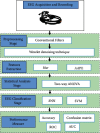







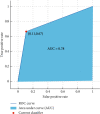

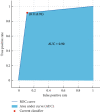
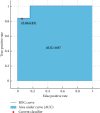
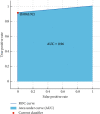
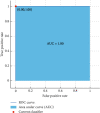
Similar articles
-
An integrated entropy-spatial framework for automatic gender recognition enhancement of emotion-based EEGs.Med Biol Eng Comput. 2022 Feb;60(2):531-550. doi: 10.1007/s11517-021-02452-5. Epub 2022 Jan 13. Med Biol Eng Comput. 2022. PMID: 35023073
-
Emotion classification in Parkinson's disease by higher-order spectra and power spectrum features using EEG signals: a comparative study.J Integr Neurosci. 2014 Mar;13(1):89-120. doi: 10.1142/S021963521450006X. Epub 2014 Mar 11. J Integr Neurosci. 2014. PMID: 24738541
-
Effective EEG Channels for Emotion Identification over the Brain Regions using Differential Evolution Algorithm.Annu Int Conf IEEE Eng Med Biol Soc. 2019 Jul;2019:4703-4706. doi: 10.1109/EMBC.2019.8856854. Annu Int Conf IEEE Eng Med Biol Soc. 2019. PMID: 31946912
-
Emotion recognition from single-channel EEG signals using a two-stage correlation and instantaneous frequency-based filtering method.Comput Methods Programs Biomed. 2019 May;173:157-165. doi: 10.1016/j.cmpb.2019.03.015. Epub 2019 Mar 22. Comput Methods Programs Biomed. 2019. PMID: 31046991
-
EEG-based human emotion recognition using entropy as a feature extraction measure.Brain Inform. 2021 Oct 5;8(1):20. doi: 10.1186/s40708-021-00141-5. Brain Inform. 2021. PMID: 34609639 Free PMC article. Review.
Cited by
-
Neural Dynamics Associated with Biological Variation in Normal Human Brain Regions.Entropy (Basel). 2024 Sep 29;26(10):828. doi: 10.3390/e26100828. Entropy (Basel). 2024. PMID: 39451905 Free PMC article.
-
Complexity and non-predictability in neurodynamic: gender-specific EEG dynamics uncovered via hidden markov models.Cogn Neurodyn. 2025 Dec;19(1):87. doi: 10.1007/s11571-025-10271-9. Epub 2025 Jun 9. Cogn Neurodyn. 2025. PMID: 40502995
-
Sex differences of signal complexity at resting-state functional magnetic resonance imaging and their associations with the estrogen-signaling pathway in the brain.Cogn Neurodyn. 2024 Jun;18(3):973-986. doi: 10.1007/s11571-023-09954-y. Epub 2023 Mar 23. Cogn Neurodyn. 2024. PMID: 38826661 Free PMC article.
-
Musical Emotions Recognition Using Entropy Features and Channel Optimization Based on EEG.Entropy (Basel). 2022 Nov 28;24(12):1735. doi: 10.3390/e24121735. Entropy (Basel). 2022. PMID: 36554139 Free PMC article.
References
-
- Maaoui C., Pruski A. Emotion recognition through physiological signals for human-machine communication. In: Kordic V., editor. Cutting Edge Robotics 2010 . London, UK: IntechOpen; 2010.
-
- Bos D. O. EEG-based emotion recognition. The Influence of Visual and Auditory Stimuli . 2006;56(3):1–17.
Publication types
MeSH terms
LinkOut - more resources
Full Text Sources
Miscellaneous

